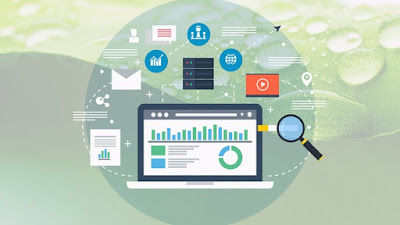5 Courses to Learn RESTful Web Services With Java and Spring in 2019
In this article, we share some of the best courses to learn REST API development in the Java world using Spring.
Join the DZone community and get the full member experience.
Join For FreeIn the last article, I shared some courses to learn Microservices development with Spring, and today, I'll talk about RESTful web service development. REST APIs and RESTful web services need no introduction; they're everywhere now and driving a new internet revolution. Most software development in the web space now also involves REST APIs.
Gone are the days where the only interface for a web application is the browser. Now, most of them support REST APIs, which allows them to be accessible on any device like mobile devices, tablets, Apple watches, or any other digital gadget.
It doesn't matter whether you are working for software giants like Amazon, Microsoft, or Google or working with startups; REST APIs are everywhere.
When it comes to developing REST APIs in Java, there are a lot of choices available e.g. you can use JAX-RS-based frameworks like Restlet and Jersey, or you can use Spring framework.
I personally like Spring for developing RESTful web services because it has excellent support for developing RESTful web services, and I can also use my existing knowledge of Spring MVC to develop RESTful web services.
In this article, I am going to share some of the best courses to learn REST API development in the Java world using Spring. These courses not only teach you how to write your own REST APIs but they teach you how to consume them from public APIs offered by Facebook, Twitter, Uber, and other companies.
They will also teach you advanced concepts like security for your REST API, versioning, filtering, pagination, and handling errors. By going through these courses, you will have enough knowledge of how to develop RESTful web services and how to design REST APIs for real-world applications.
5 Online Course to Learn REST With Spring and Java
Here is my list of courses to learn REST with Spring and Java. The list contains some of the best courses to learn how to both design REST APIs as well as develop them using Spring framework e.g. Spring MVC and Spring Boot.

1. REST API Design, Development, and Management
In order to develop a successful RESTful web service, you must first understand what a REST API itself is and how it works. This overview of REST APIs is the best course I have ever seen. This course is both comprehensive and full of real-world examples where the author walks you through real-world REST APIs exposed by Twitter, Facebook, Uber, Netflix, and other companies to explain concepts and best practices.
The course is divided into 5 main sections. In the first part, you will learn REST API concepts, which will cover foundational concepts such as the evolution of the RESTful API and the 6 architectural constraints.
In the second section, you will learn how to design the REST API. This is a really useful section where you will learn about best practices for designing a REST API.
The author will walk you through some of the popular API providers (like Twitter, Facebook, Uber, etc.) and show you how they have designed their REST API.
Here in this section, you will learn about resources, CRUD implementation, error handling, HTTP status codes, versioning, pagination, partial responses, etc.

In the next section, the author explains how to secure a REST API. You will learn about the commonly adopted authentication and authorization schemes used for RESTAPIs, like Tokens (JSON web tokens or JWT), Key/Secret, and OAuth 2.0 (using Spotify implementation as a reference).
In last two sections, you will learn about Swagger 2.0/Open API initiative specifications and API management, the process of publishing, documenting, and overseeing application programming interfaces (APIs) in a secure, scalable environment.
In short, it's one of the best courses to get the conceptual and practical knowledge of REST APIs. It's not about coding from scratch but building the concept before coding.
2. REST With Spring Certification Class
If the previous course is the best course to learn about REST API concepts, this is the best course to implement RESTful APIs using the Spring framework.
It's a comprehensive course that is divided into several modules covering all aspects of developing RESTful web services, like the basics of REST with Spring, REST and HTTP fundamentals, simple security, consuming the API from Angular JS, and testing using curl and Rest Assured.
It also covers the advanced concepts of REST API security using OAuth2 and JWT, documenting, discovering, and evolving the REST API using Swagger and HATEOAS.
The course also teaches you some practical stuff with respect to monitoring REST APIs and API Metrics, DevOps and CI stuff like setting up a simple Jenkins pipeline from scratch, and advanced API tactics.
Eugen has also introduced some new modules to take advantage of new features introduced in Spring 5 like building a reactive REST API, moving away from Servlet and going to reactive, as well as covering new Spring 5 features and Spring MVC features.
In short, it's one of the best courses to join if you want to learn how to develop real-world RESTful APIs from scratch using Spring MVC.
3. Master Java Web Services and REST API With Spring Boot
This is another good course to learn about web services in Java — with both SOAP and REST — as well as learn how to develop a REST API using Spring Boot.
The course is divided into two parts; the first part covers RESTful Web Services, and the second part is devoted to SOAP web services.
In the first part of this course, you will learn the basics of RESTful web services by developing resources for a sample social media application.
You will learn to implement these resources with multiple features — versioning, exception handling, documentation (Swagger), basic authentication (Spring Security), filtering, and HATEOAS. You will also learn the best practices in designing RESTful web services.
The course also explains all the tools and libraries you need for your RESTful API development. You will be using Spring for dependency management, Spring MVC and Spring REST, Spring Boot, Spring security for authentication and authorization, Spring Boot Actuator for monitoring, Swagger for documentation, Maven for dependencies management, Eclipse for coding and development, Postman for testing REST Services, and Tomcat as an embedded web server.
In the next part, you will learn about SOAP-based web services (which you can ignore if you are only focused on RESTful web services). Learn what the problems are with SOAP — which REST solves — and make a decision between SOAP and REST for future projects.
4. Create REST APIs Using Spring Data REST
This is a great course to master the concepts of Microservices, REST, and Spring Data REST by developing a simple RESTful API using Spring Data REST.
Spring is the most widely used framework in the Java world, and REST web services have become the standard way for application integration on the web, which makes learning both of them important for future web developers.
REST is also the defacto technology for Microservices communication, hence if you are moving towards Microservice architecture, good knowledge of REST API and RESTful development will go a long way.
This course helps you master the concepts of microservices, REST, and how to build an end-to-end application while exploring the various features of spring data REST. After finishing this course, you will have gained the understanding of Microservices, REST, HATEOAS, and Spring Data REST.
5. Master Microservices With Spring Boot and Spring Cloud
I first joined this course for learning microservices, but after finishing the first part, I realized that it's actually an awesome course to learn RESTful Web services as well.
The course is divided into two parts, the first part is about developing RESTful Web Services using Spring MVC and Spring Boot, while the second part is about developing microservices using Spring Cloud technology.
Software architectures are moving towards microservices, and RESTful web services are the first step to developing great microservices, whcih makes this course useful for the developer who wants to learn both RESTful web services as well as microservices.
In the second part of the course, you will learn the basics of microservices. You will understand how to implement microservices using Spring Cloud, learn to establish communication between microservices, enable load balancing, learn how to scale microservices up and down, and more.
You will also learn to centralize configuration of microservices with Spring Cloud Config Server, implement Eureka Naming Server, learn distributed tracing with Spring Cloud Sleuth and Zipkin, and develop fault-tolerant microservices with Zipkin.
Conclusion
That's all about some of the best courses to learn RESTful web service development using Java and Spring frameworks. As I have said, RESTful web services are very popular, and there are a lot of jobs out there that need Java developers with decent Spring and REST skills. These courses will help you to achieve that, and you can use them to give your career a boost and keep yourself ahead of the competition.
Published at DZone with permission of Javin Paul, DZone MVB. See the original article here.
Opinions expressed by DZone contributors are their own.




Comments